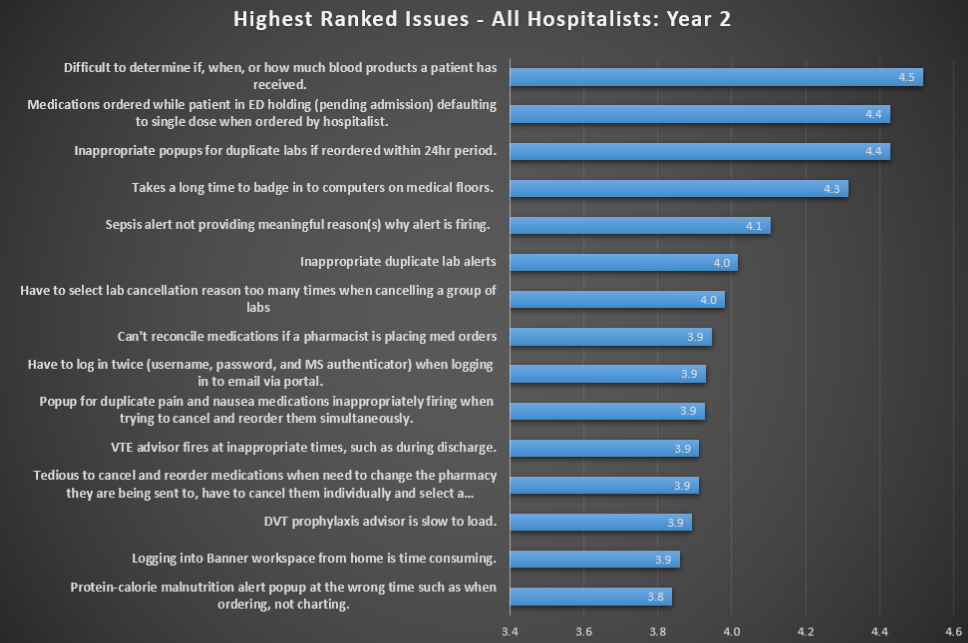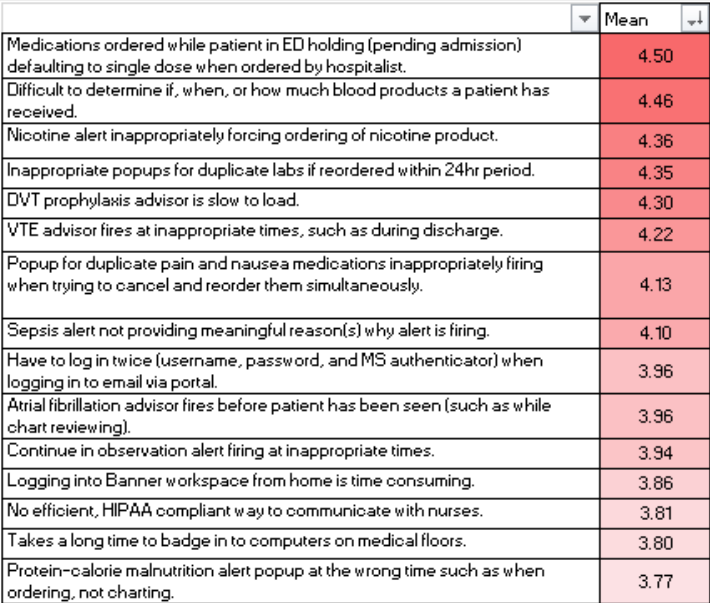Background: Health information technology (HIT) systems, though designed to improve clinical workflow efficiency, have ironically contributed to clinician burnout, especially among hospitalists who depend on these systems for patient care and coordination (Adler-Milstein 2020). Addressing these challenges requires a detailed, resource-intensive process to identify workflow inefficiencies. Because this process is difficult, it is often performed sub-optimally, or overlooked completely. This leads to a poor understanding of the specific issues that are contributing to hospitalist burnout. Therefore clinical informatics and information technology (IT) teams are unable to address these issues effectively.
Purpose: The project aims to develop and implement a comprehensive and effective survey tool to accurately and efficiently identify and address HIT-related frustrations among hospitalists over time. Therefore, these issues can be effectively communicated to the appropriate informatics and IT teams, facilitating targeted improvements, and improved hospitalist experience. Our tool, centered around electronic health records (EHR) workflows, enables real-time feedback and captures user experiences accurately. The survey encompasses hospitalists across 30 hospitals, providing valuable insights for discussions with hospital system leadership to highlight critical areas for intervention and the need for informatics and IT resource allocation to address these issues.
Description: The survey process, based on a heuristic clinical workflow analysis model (i.e. specific issues are identified and then ranked), began in early 2022 with 10 hospitalists from a large academic medical center identifying 38 unique workflow issues on a 2-week survey that was distributed via text message during their daily rounds. In fall 2022, this list of issues was distributed to a broader group of hospitalists across 30 hospitals, with 134 participants ranking these issues by severity level. This process was repeated this year, uncovering 22 new issues, and leading to a comprehensive list of 60 challenges. These issues were again ranked by all hospitalists, with significant findings presented in Figures 1 and 2.
Conclusions: This survey tool has been instrumental in highlighting inefficiencies in HIT systems that contribute to hospitalist frustration. Its texting-based dissemination strategy maximized participation while minimizing hospitalist workflow disruption. The iterative nature of the survey allowed for the discovery of both new and ongoing issues over a 2-year period. These findings have become vital for communication with clinical informatics and IT teams, The survey’s comprehensive nature and demonstrated generalizability fostered a greater understanding and engagement from these teams. This increased buy-in is crucial in prioritizing these issues, leading to the strategic allocation of resources for their detailed evaluation and, ideally, their subsequent resolution. Multiple issues were able to be addressed or resolved, this past year, because of this improved multidisciplinary communication. In addition, the latest survey results show a decrease in hospitalist frustration levels following issue resolution, underlining the tool’s effectiveness. Its adaptability makes it a valuable asset for other hospitalist groups, aiming to improve workflows, and reduce frustration and burnout, thus enhancing patient care quality.


